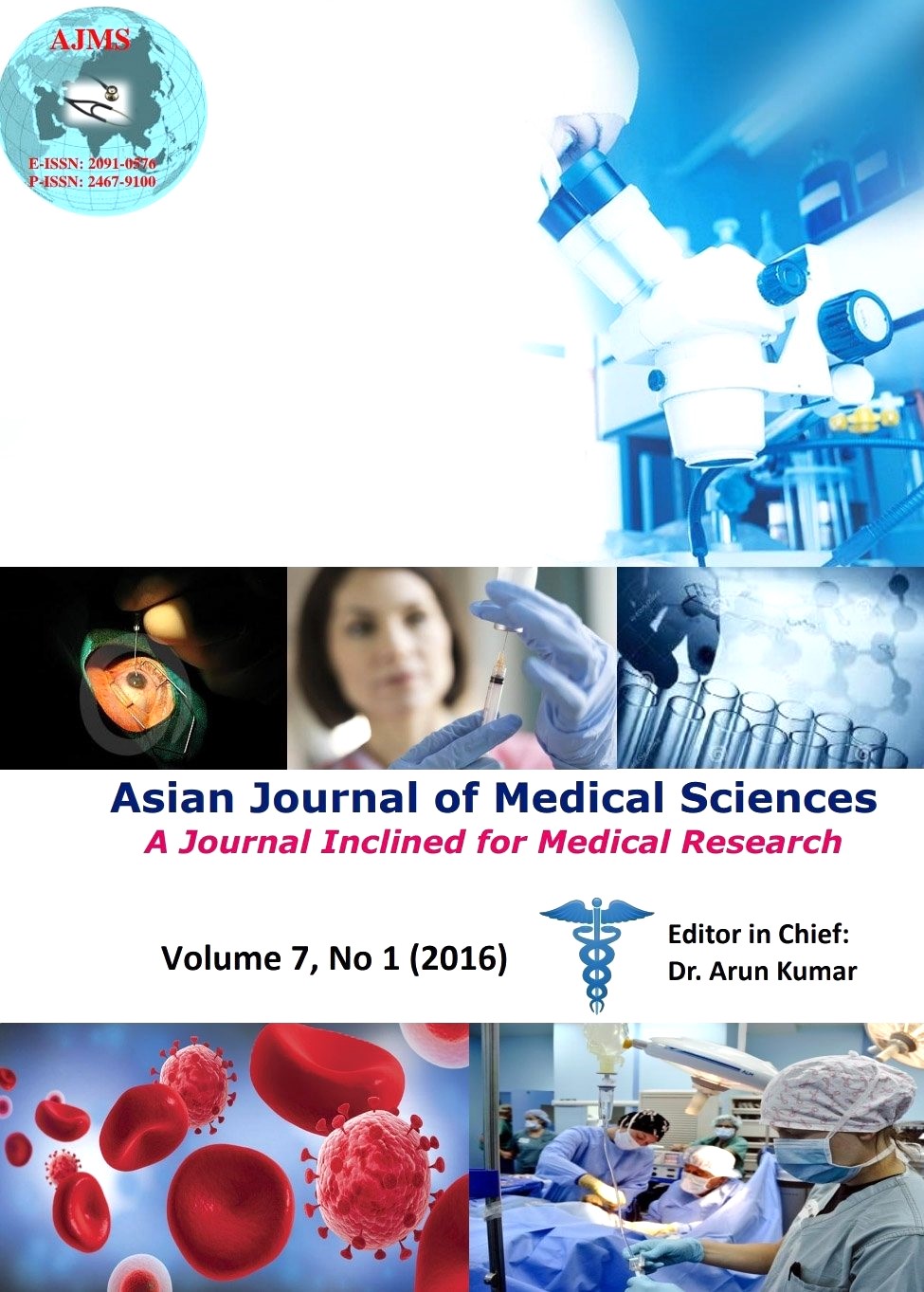Mean platelet volume: An economical diagnostic marker of cardiovascular risk assessment in altered fasting blood glucose levels
Keywords:
Diabetes mellitus, Impaired fasting blood glucose, Mean platelet volume, Platelets countsAbstract
Background: Platelets with altered morphology or large size are more thrombogenic and are likely to be associated with increased risk of vascular disease. Platelet parameters especially high mean platelet volume (MPV) has been reported in diabetic patients as major contributing factor. The aim of the present study was to find correlation between fasting blood glucose value and hematological variables (PC and MPV), not only in diabetics, but also in the normoglycemic subjects and patients with impaired fasting blood glucose levels.
Materials and Methods: In the present study 3471 subjects were analyzed retrospectively and categorized into three groups based on the fasting blood glucose levels as Group I - normoglycemics (FBG ? 109 mg/dl, n = 1158), Group II- impaired fasting blood glucose (FBG ? 126 mg/dl, n = 1158) and Group III – Diabetics (FBG ? 127 mg/dl, n = 1155).
Results: We found progressive increase in value of MPV with the increasing FBG levels, in the following order: G1 (8.44 ± 0.842 fl), G2 (8.98 ± 0.898 fl), G3 (9.31 ± 0.967 fl). The platelet count however, did not show much statistical significance with rising glucose levels.
Conclusions: MPV increased proportionally with increasing plasma glucose levels. Although the variation between the normoglycemics and impaired fasting group was not very significant, the parameters still showed progressive increase with rising sugar levels significant in diabetic group.
Asian Journal of Medical Sciences Vol.7(1) 2015 30-33
Downloads
Downloads
Published
How to Cite
Issue
Section
License
Authors who publish with this journal agree to the following terms:
- The journal holds copyright and publishes the work under a Creative Commons CC-BY-NC license that permits use, distribution and reprduction in any medium, provided the original work is properly cited and is not used for commercial purposes. The journal should be recognised as the original publisher of this work.
- Authors are able to enter into separate, additional contractual arrangements for the non-exclusive distribution of the journal's published version of the work (e.g., post it to an institutional repository or publish it in a book), with an acknowledgement of its initial publication in this journal.
- Authors are permitted and encouraged to post their work online (e.g., in institutional repositories or on their website) prior to and during the submission process, as it can lead to productive exchanges, as well as earlier and greater citation of published work (See The Effect of Open Access).




